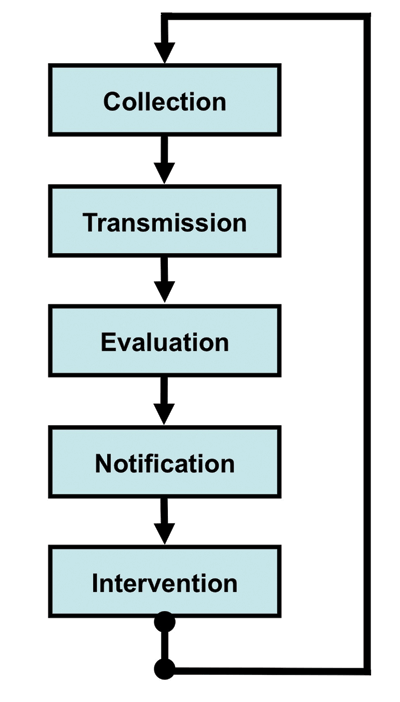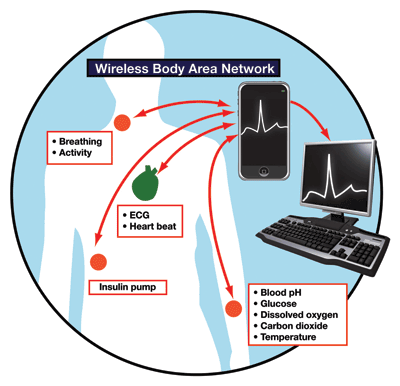To make RPM as efficient as possible, the medical industry is progressively using new sensor and wireless technologies
BY IBOUN TAIMIYA SYLLA
Business Development Manager, Low-Power RF
Texas Instruments
www.ti.com
The ability to monitor the medical conditions of patients living in remote locations, called remote patient monitoring or RPM, can help lift a huge pressure from today’s healthcare system. RPM plays a big role in bridging the hospitals and homes. It has been shown to be effective in several areas, such as chronic disease management, post-acute care, and monitoring the safety of the older adult population. Monitoring systems also help older people to slow the progression of chronic diseases and ensure continued recovery after being discharged from an acute care facility.
To make RPM as efficient as possible, the medical industry is progressively taking advantage of the benefits offered by both sensor and wireless technologies’ innovations. Using both technologies can help overcome some of the bottleneck in RPM.
Remote patient monitoring
RPM activity can be divided into five important steps:
1. Collect specific physiological data.
2. Transmit collected data to a specific location.
3. Evaluate data collected to determine if there is any abnormality.
4. Notify concerned parties.
5. Intervene for possible corrective action.
The flow of activity is seen in Fig. 1.

Fig. 1: The five steps of a remote patient-monitoring system flow from one to the next in orderly fashion. Steps 1 and 2 are often the ones that can present bottleneck to the system.
The first two steps, the collecting and transmitting of data, are critical in the RPM systems. Useful information needs to be reliably detected and transmitted for the system to work effectively. If valuable information is inaccessible or ignored, the ability to respond appropriately and to optimize the treatment regimen can be compromised.
For a long time, RPM has been constricted by the lack of effective data collection devices and reliable transmission systems. The reliability of sensors and transmission systems have constituted the main bottleneck in any RPM system. Therefore, any improvement of these two elements will largely impact the function of the system in a positive way.
Technology gains
RPM systems generally employ two types of sensors: behavioral and characteristic. Behavioral sensors are used to observe an individual’s actions, and include motion detectors, pedometers, cameras to detect motion patterns (such as potential falls), and so forth. Data regarding actions is translated into behavioral information, which is evaluated to determine if action should be taken.
Characteristic sensors, on the other hand, help measure an individual’s physiological attributes. They measure such factors as body temperature, blood pressure, stress levels, blood-glucose levels, and so on. The system stores or reacts to the data as required by the particular reading and application.
Over the years, innovations in sensing technologies have helped improve this critical element of the RPM system. These innovations mainly cover such aspects as reduced form factor and current consumption, and increased reliability and intelligence. In addition to sensors reliability, the wires used in the traditional patient monitoring systems limited the patient’s activity and level of comfort, which negatively impacted the measured results.
Advances in wireless technology, such as RFID tag or readers, and new sensors technologies, such as MEMS, are making possible such applications as body-area networks (BANs) for RPM (Fig. 2 )

Fig. 2: In a typical wireless body area network, a network of sensors is placed close to the human body or implanted in some tissues to enable the collection of specific physiological data to continuously monitor a patient’s health, regardless of his or her physical location.
In a body-area network, the sensed signal can be that for electroencephalography (EEG), electrocardiography (ECG), electromyography (EMG), skin temperature, skin conductance, and electrooculography (EOG). Each of these sensors transmits the collected information wirelessly to an external processing unit, which instantly transmits all information in real time to the doctors or to a specific server. The sensors used in the BAN generally must be accurate and have a certain level of a signal processing as well as some wireless features. The sensors have transceivers or only transmitters. This is a factor in defining the network’s characteristics.
Transmission requirements
With the explosion of wireless technologies and the emergence of several standards, especially in the industrial scientific and medical (ISM) band, RPM systems of today is a reliable way of transmitting data using electromagnetic signals, thus bypassing wires. RPM systems can be implemented using several existing wireless standards such as Bluetooth, ZigBee, Wi-Fi, ANT, or BLE. Table 1 describes the different useable standards in RPM and applications for which they have been optimized.
Table 1: Wireless standards used in remote patient monitoring.
| Standards | Optimization |
| Bluetooth | Voice links |
| ZigBee | Industrial sensors, smart grids, smart energy |
| WI-FI | Data networks |
| ANT | Low-current consumption, but high peak current |
| BLE | Low-current consumption, but high peak current |
Existing standards, however, have not been optimized for medical applications such as BAN: they have significant overhead because they were designed with other applications in mind. Therefore, they don’t generally meet the desirable peak-power consumption for medical applications.
To develop a communication standard that is optimized for low-power devices and suitable for RPM applications, IEEE has launched the IEEE 802.15 Task Group 6 (BAN), known as IEEE 802.15.6 standard.
IEEE 802.15.6 presents several advantages compared to existing standards. While focusing on short distance and low cost, it has low complexity and low current consumption. The IEEE 802.15.6 standard defines the PHY layer as well as the MAC protocol and the security layers. To address the diverse data-rate requirements imposed by medical and consumer applications, the PHY layer is divided into three frequency bands: narrowband, ultra-wide band, and humanbody communication band.
The standard targets a distance of three meters while supporting data rates between 100 kbit/s and 1 Mbits/s with a peak power consumption of 3 mA. The MAC protocol is defined to control access to the channel. The standard also defines three levels of security: unsecured communication (level 0), authentication only (level 1), and both authentication and encryption (level 2).
With the technological advances accomplished in both sensing and wireless technologies, remote patient monitoring can play a major role in healthcare systems worldwide. Even though hospitals and home healthcare are expected to remain the primary drivers of remote patient monitoring, we might witness the enabling of many other medical applications, such as teleconference visits or remote vital-sign checks. ■
Advertisement
Learn more about Texas Instruments





